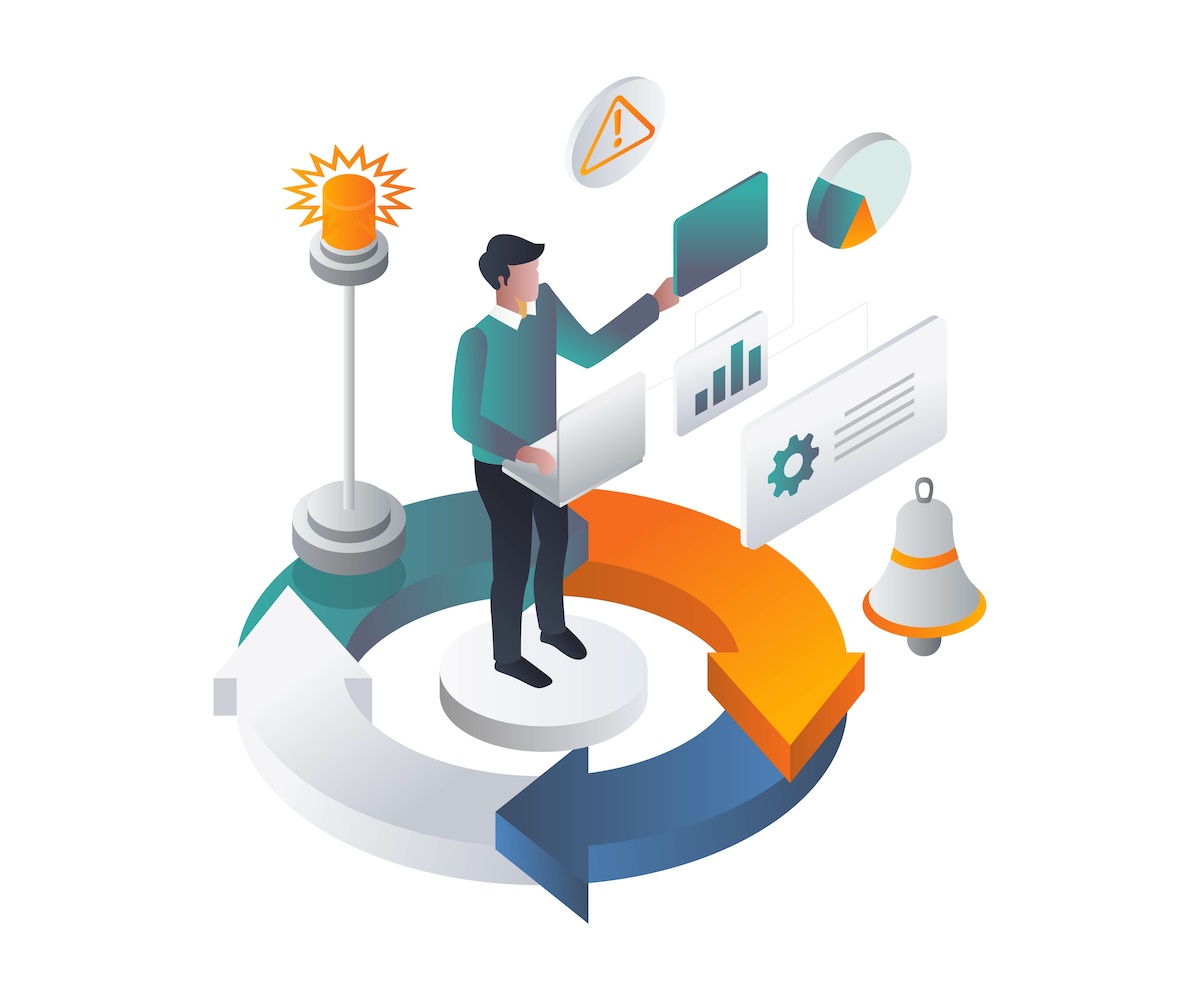What’s the Difference Between BCDR and Remote Data Backup?

Business Continuity and Disaster Recovery
A business continuity and disaster recovery (BCDR) plan can keep your organization safe in the face of cybersecurity threats and network outages. Remote data backups are also an important facet of your cybersecurity. Understanding the difference between BCDR and a remote data backup can help your business maintain cybersecurity best practices and be prepared in the face of unplanned network downtime.
Since it’s Cybersecurity Awareness Month, now’s a good time to learn about ways to secure your data against loss events caused by human error, natural disasters, or malicious actions by cybercriminals (such as ransomware attacks). Knowing the difference between a true BCDR solution and a simple remote data backup can help you better plan how to keep operations going in the face of a disaster while controlling your cybersecurity costs.
What Is Remote Data Backup?
A remote data backup, also known as a cloud data backup or online data backup, means you are backing up your data to a remote server. Remote data backups via the cloud are secure, especially against ransomware attacks that target your data locally. Even if your local network is attacked, your remote data will be safe. All you need to do is re-download your data from the remote backup solution.
Cloud servers are user-friendly and easy to maintain, especially since there is not any hardware you need to worry about setting up. Most remote servers are SaaS, so the cost is predictable every month and can work for small businesses and enterprises. Most remote servers allow for data backup scheduling so you can regularly back up your data without having to even think about it.
What Is Business Continuity and Disaster Recovery?
BCDR is broken down into two practices: business continuity and disaster recovery. While BCDR and business continuity plans are often used interchangeably, they’re not exactly the same thing—even though they’re both crucial parts of IT infrastructure management.
Business continuity is the process of keeping your organization up and running during a cyberattack or emergency, including the strategies and standard operating procedures (SOPs) in place for getting back online. Disaster recovery details exactly how you solve the issue and restore your systems to prevent data loss.
This can include everything from how to get back up and running after losing access to your physical data center to how you’ll handle ransomware attacks. Your BCDR plan should include:
- Employee contact information for those on the DR team and their availability
- Employee responsibilities
- Change management procedures
- How and when to implement the plan
- SOPs, broken down step-by-step
- When you will review, test, and update the plan
- Policy statement and goals
- Response and recovery steps based on incidents (i.e. ransomware, malware, IT downtime)
- Multi-factor authentication tools and processes
The Difference between BCDR vs Remote Data Backup
A remote data backup is just one part of a disaster recovery plan. Both are major parts of ensuring that your systems go back online and that you do not lose any data, so you can minimize costs and harm.
A cloud backup can help strengthen your BCDR plan so that way, your data is secure offline rather than compromised with your systems in the event of malware or equipment failure. When implementing your BCDR plan, your remote data backup can help get you back up and running and restore any data that was lost.
Get Help with Securing Your Data Against Loss
Remotely backing up your data to the cloud is a breeze with Converged Technology Group. Our data center technology consultants work with leading data center companies to keep your systems up-to-date, secure, and scalable. Schedule a consultation today to see how our team can help you secure your data against loss.

